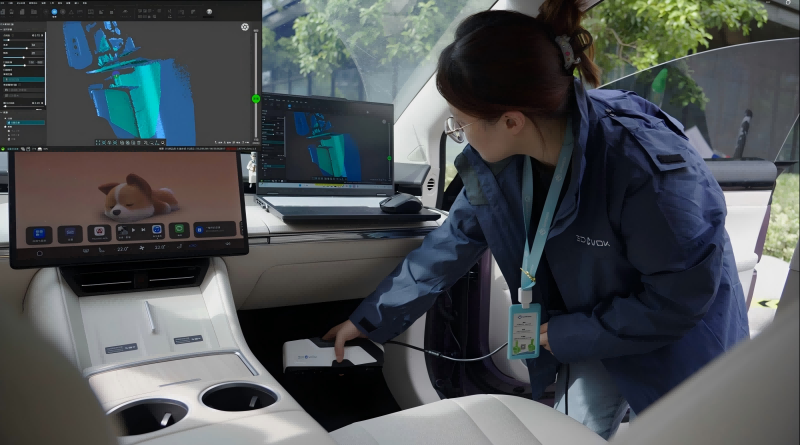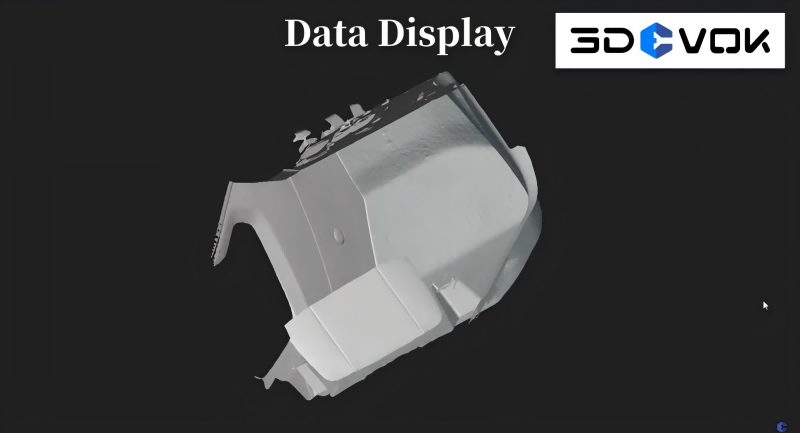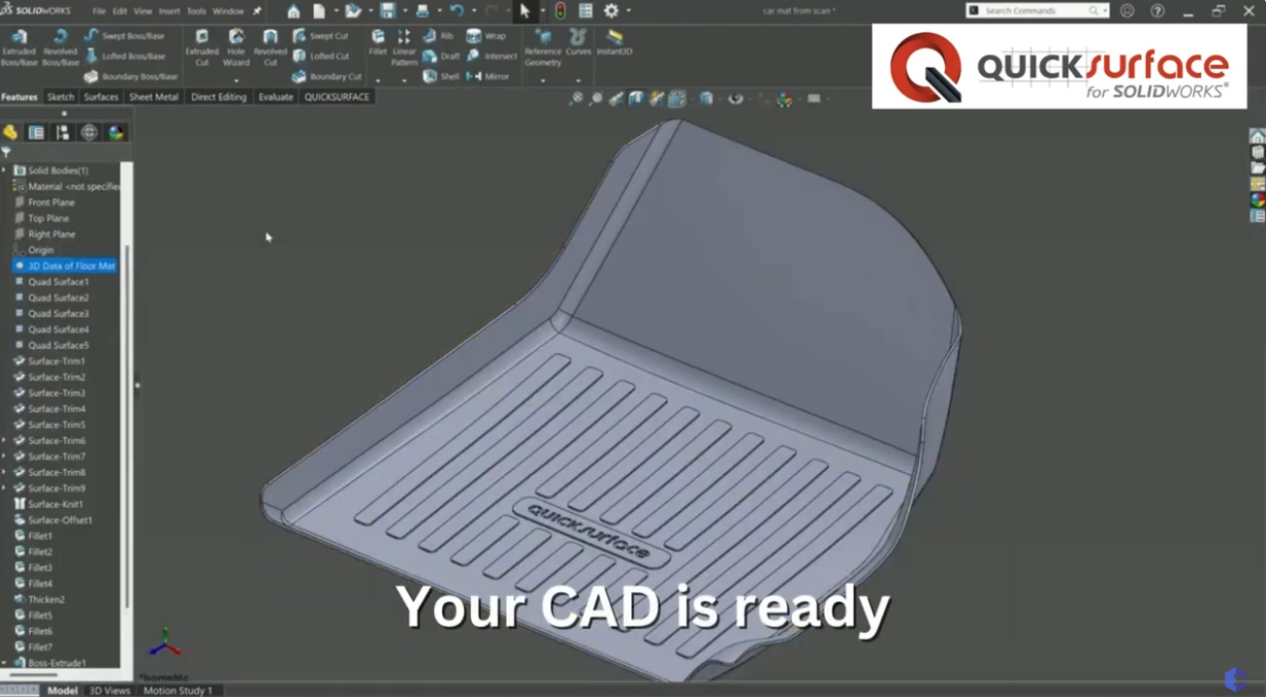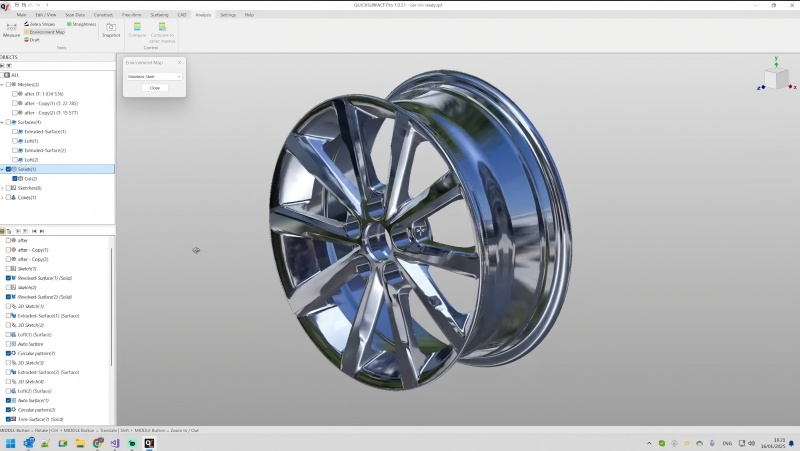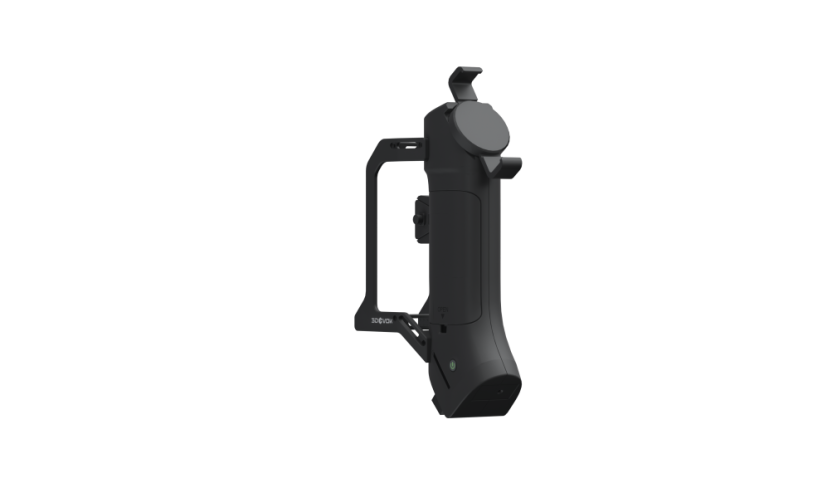Automotive Industry Full-Range Scan-to-CAD Solution: High-Precision Reverse Engineering from Interior to Exterior
07/07/25
As the wave of automotive consumption upgrades sweeps across the globe, private car owners are experiencing explosive growth in demand for personalized interiors. Customization requirements such as curved surface styling, split designs, and precise upholstery have become mainstream trends. Faced with increasingly complex curved floor mat design demands, traditional manual measurement methods can no longer meet the need for accurate measurements—time-consuming and inefficient, they have fallen short of market requirements.
3DeVOK’s Self-Developed MQ 3D Scanner: A Game-Changer for Automotive Interior Manufacturers
The MQ handheld 3D scanner combines 22-line infrared laser and infrared speckle structured light, achieving an ultra-high accuracy of 0.08mm. With its marker-free, non-contact scanning capability, it captures complete 3D data of floor mats in just minutes, laying a solid foundation for fast, high-quality CAD modeling.
Notably, the MQ scanner delivers stable performance even on traditionally “difficult-to-scan” materials like dark or light-absorbing surfaces, effortlessly capturing flexible curves and intricate textures with high precision—dramatically improving workflow efficiency.
Engineers who have used it report:
“The car interior is tight, but the MQ compact design makes scanning smooth and effortless. Even complex textures and dark-colored materials on floor mats are captured with impressive accuracy.”
Obtaining the data of a 3D model is just the beginning. Many interior product manufacturers require editable CAD files to facilitate subsequent design and production. 3DeVOK Studio 3D scanning software supports one-click integration with Quicksurface reverse engineering software. Through features like free-form surfaces and deviation analysis, it enables rapid customization of floor mats. The subsequent workflow is as follows:
- Data Preprocessing
- Clean redundant data points after importing the STL file.
- Basic Surface Fitting
- Select target polygonal regions to generate optimally fitted intelligent surfaces.
- Model Alignment
- Align the mesh to the world coordinate system based on geometric features (e.g., planes/axes) to facilitate subsequent parametric modeling and dimensioning.
- Freeform Surface Fitting
- Dynamically adjust control points using real-time deviation heatmaps to ensure the surface closely matches the scanned data.
- Parametric Reconstruction
- Create parametric sketches based on feature lines and apply geometric constraints (dimensions, angles, tangency).
- Surface Trimming
- Use 2D sketches as trimming tools to optimize boundary continuity of surfaces.
- Thickening & Finishing
- Apply thickness features and add manufacturing fillets.
- Deviation Analysis & Export
- Verify deviations between the reconstructed model and scanned data, then export to CAD formats (STEP, IGES, etc.) for direct use in downstream design or machining.
From Interior to Exterior: New Challenges in Mold Manufacturing
As automotive manufacturing gradually expands from interior to exterior components, many parts face replication or production difficulties due to missing original CAD files, design drawings, or technical documentation during development or repair. Traditional manual measurement methods are not only time-consuming and labor-intensive but also struggle to ensure accuracy.
In such cases, leveraging 3D scanning combined with reverse engineering technology enables rapid acquisition of a part’s complete 3D data and efficient reconstruction of editable CAD files based on scan results. Whether for custom development, structural optimization, or remanufacturing, this solution provides a viable approach for digital reconstruction and efficient production of components, significantly enhancing mold development efficiency and precision control.
3DeVOK MT Professional-Grade 3D Scanner Delivers Perfect Solutions for Workpiece Scanning
The MT model features 34 blue laser lines and 22 infrared laser lines, combined with a large-format infrared speckle projection system, achieving ultra-high precision up to 0.04mm. It reliably captures even challenging surfaces like metal and reflective materials. When used with marker points, it further enhances spatial alignment accuracy for complex workpieces, ensuring every detail is captured with precision.
Take scanning a reflective wheel hub as an example:
Equipped with 34 blue laser lines and marker points, the system eliminates the need for anti-reflective spray, allowing engineers to capture high-precision data of reflective metal parts in just minutes. The scanned data can then be directly processed in 3DeVOK Studio for preliminary optimization before exporting as an STL file. With one-click import into Quicksurface, the reverse engineering workflow begins immediately.
- Import Scan Data
- Load scanned wheel hub point cloud/mesh data into engineering software
- Model Alignment & Positioning
- Calibrate model position using wheel center axis and mounting surface as datums
- Rim Profile Reconstruction
- Sketch outer contour cross-section → Revolve to generate main structure
- Spoke Cavity Creation
- Create inner ring cross-section → Revolve-cut to form basic hollow structure
- Spoke Surface Generation
- Extract spoke surface boundaries via 3D sketch → Extrude-split scanned data
- Generate smooth transitional surfaces using automatic surfacing
- Feature Pattern Replication
- Apply circular pattern (5x equal division) to single spoke surface
- Detail Feature Processing
- Center bore: Sketch-revolve cutting
- Bolt holes: Create single hole feature then pattern copy
- Final Verification & Export
- Validate critical dimensions (PCD/offset)
- Export universal CAD formats (STEP)
Compared to the MQ, the MT is better suited for industrial-grade workpieces with higher structural complexity and stricter requirements for geometric accuracy and data editability, such as precision components like metal brackets, machined parts, and mold prototypes.
In addition to serving automotive parts manufacturing and exterior trim production companies, the 3DeVOK MQ and MT are also widely used in academic research and teaching scenarios in fields such as manufacturing engineering, mechanical engineering, and automotive engineering. Their non-contact, marker-free, and high-precision scanning provides a reliable data foundation for teaching and research tasks such as product engineering design, reverse modeling experiments, and structural optimization analysis.
With the combined capabilities of the 3DeVOK MQ and MT 3D scanners and QuickSurface’s modeling software, users can establish a high-precision, high-efficiency Scan-to-CAD workflow. This not only helps enterprises accelerate product iteration and optimize mold development but also enhances engineering practice education in universities, promotes industry-academia-research collaboration, and fully unleashes the innovative potential of 3D digitization.
Related Articles
View Our Product


